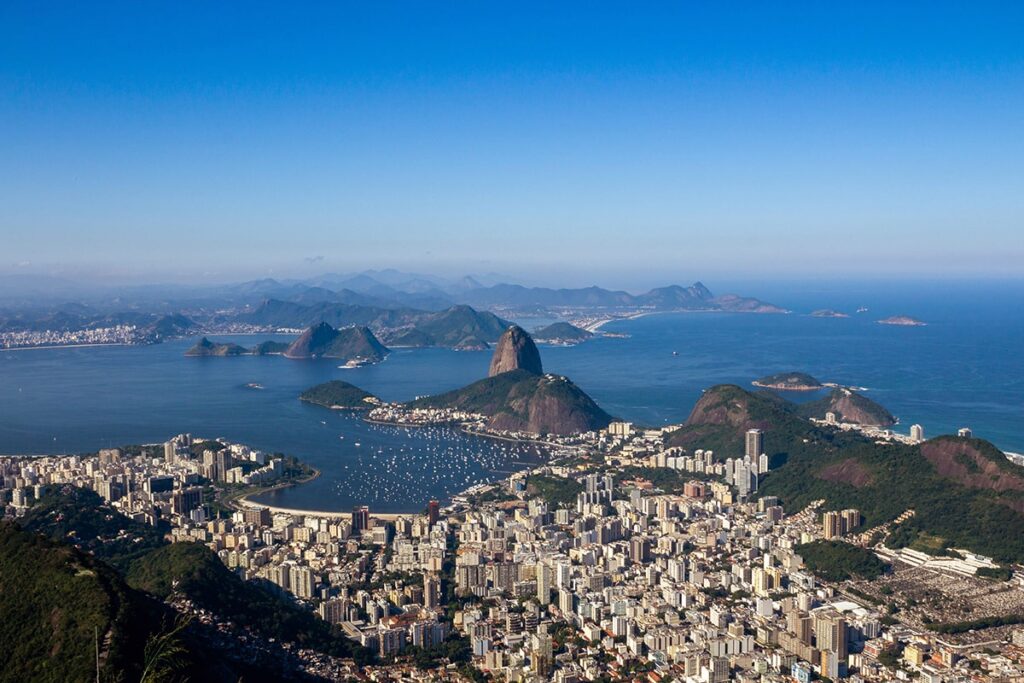In this article, we have gathered a compilation of fascinating facts and highlights of Rio de Janeiro. From its colonial past to its modern urban development, Rio has a story to tell.
You can also read interesting facts about Brazil here.
The 3 Most Interesting Facts About Rio de Janeiro
1. The bluest sky in the world
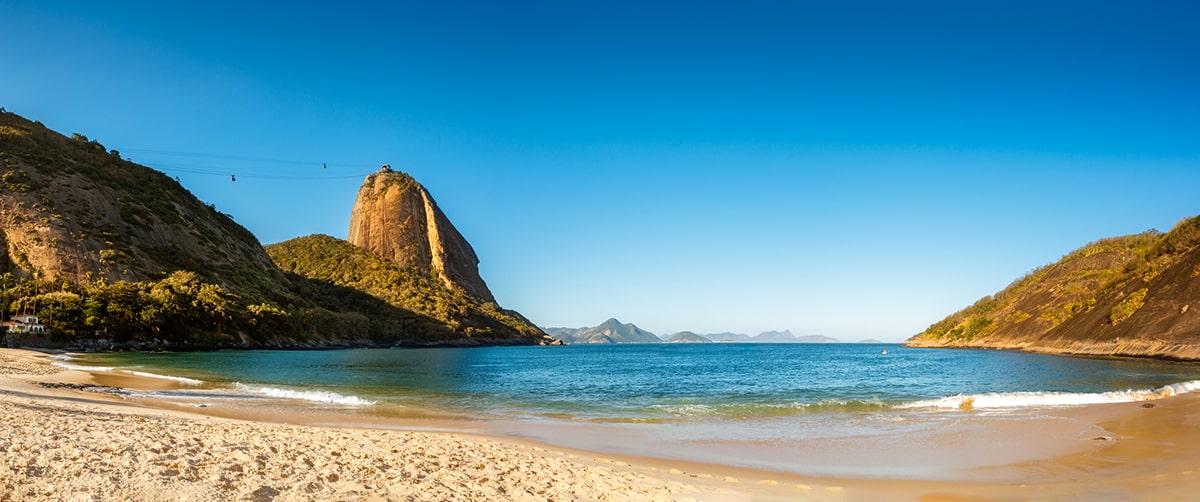
Rio de Janeiro boasts the bluest sky in the world, a claim backed by a 2006 survey conducted by a TV researcher named Anya Hohnbaum. She embarked on a 72-day journey to 20 different destinations, equipped with a specialized portable spectrometer developed by British scientists at the National Physical Laboratory to ensure scientifically validated results.
2. Christ the Redeemer is a Wonder of the World
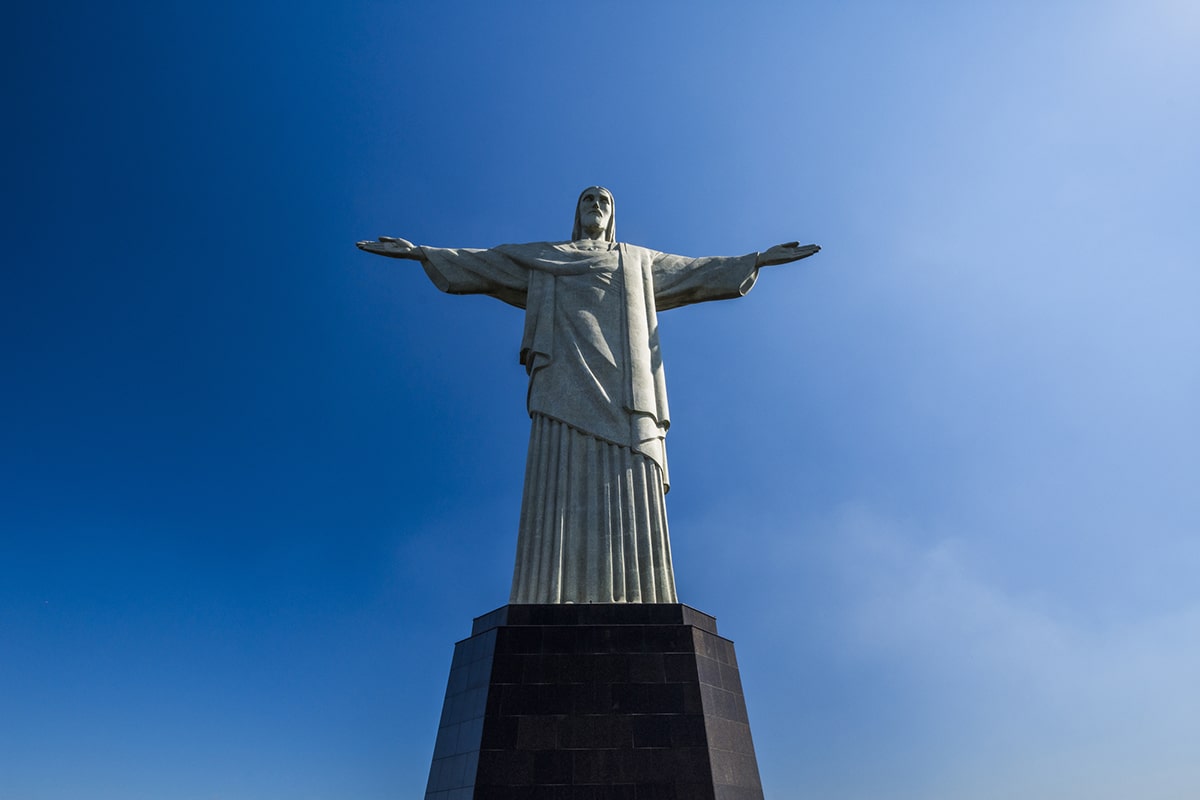
2. The statue of Christ the Redeemer, an iconic symbol of Rio, earned its place as one of the New 7 Wonders of the World in 2007, alongside renowned landmarks such as the Roman Colosseum and the Taj Mahal. This remarkable 98-foot-tall Art Deco statue, inaugurated in 1931, defied the challenges of its precarious construction on the cliffs of Corcovado Mountain, all without the support of scaffolding. Financed by Brazilians, designed by a Frenchman, and constructed from Swedish stones, it remains an enduring symbol of the city.
3. Rio is Home to the World’s Eighth-Largest Library
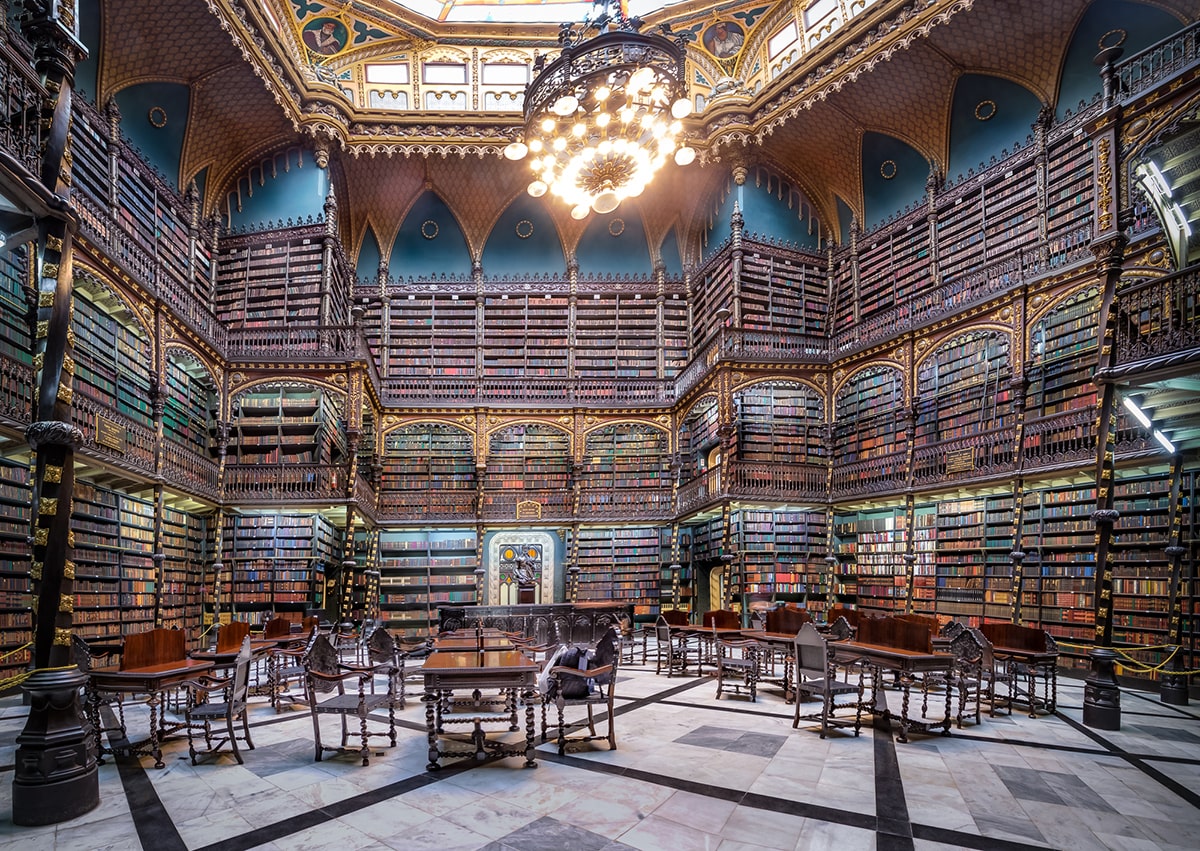
3. Rio de Janeiro is home to the world’s eighth-largest library, a historical legacy that traces back to November 1807 when the Royal Family of Portugal sought refuge in Brazil to escape Napoleon and his forces. Along with them, they brought the Royal Library and its 60,000 items, laying the foundation for what would later become the National Library. Under the patronage of Dom João VI, the Portuguese Prince Regent, this institution has grown to house more than 15 million items, securing its place as the eighth largest library globally.
Facts Rio De Janeiro’s Nickname: Marvelous City
When visiting Rio de Janeiro, you’ll quickly understand why it has earned the nickname ‘Marvelous City.’ The city’s stunning natural landscape, vibrant culture, and lively atmosphere make it truly deserving of this title.
Rio de Janeiro is blessed with breathtaking beaches, such as Copacabana and Ipanema, where you can soak up the sun and enjoy the energetic beach culture. The iconic Christ the Redeemer statue, standing tall on Corcovado mountain, offers a mesmerizing view of the city.
Rio de Janeiro is also famous for its annual Carnival celebration, which is considered the biggest show on Earth. It is a fact that the city’s samba music and dance originated here, adding to its vibrant and lively spirit.
With its stunning attractions and vibrant culture, Rio de Janeiro truly lives up to its nickname as the ‘Marvelous City.’
Rio de Janeiro is Not the Capital of Brazil…
Brasilia has been the capital of Brazil since it was built in 1960, replacing Rio de Janeiro, which had served as the capital from 1763 to 1960. Salvador, on the other hand, was the center of Portuguese colonial administration in Brazil during its initial two centuries and is often referred to as the “original capital of Brazil.”
Rio de Janeiro is Also Not the Largest City in Brazil…
São Paulo, with a population of 11.2 million residents, holds the distinction of being Brazil’s largest city, the largest in the southern hemisphere, and the seventh most populous city globally. It forms the core of the São Paulo metropolitan region (SPMR), which boasts a staggering 20 million inhabitants and ranks among the top five largest metropolitan areas globally (Olinto 2011). Serving as the capital of the most populous Brazilian state, São Paulo wields significant influence in commerce, finance, the arts, and entertainment not only within Brazil but also across Latin America.
Facts The Famous Statue of Christ the Redeemer
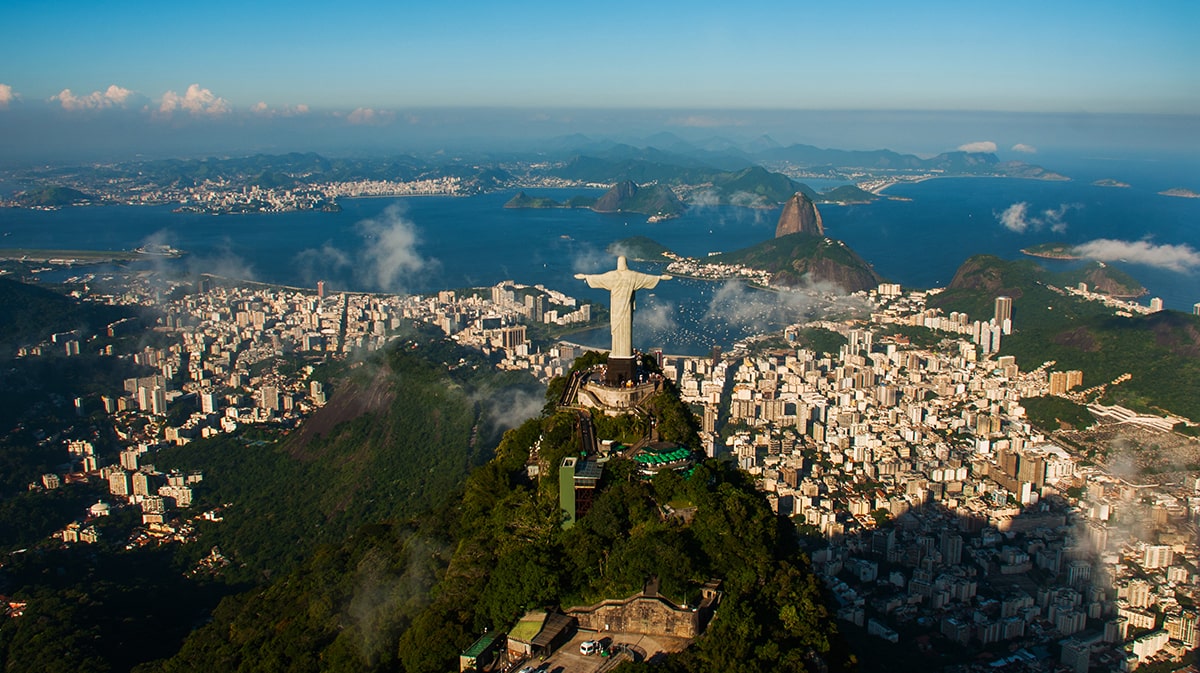
The Famous Christ the Redeemer Statue in Rio de Janeiro stands tall on Corcovado mountain, offering a breathtaking view of the city. This iconic landmark is one of the New Seven Wonders of the World and has become a symbol of Rio de Janeiro.
The statue itself is a massive representation of Jesus Christ, with arms outstretched as if embracing the city below. It was inaugurated in 1931 and has since attracted millions of visitors from around the world.
Standing at 98 feet tall, the statue is made of reinforced concrete and soapstone, and its location on Corcovado mountain provides a perfect vantage point to appreciate the beauty of Rio de Janeiro.
The facts is that whether you’re a religious person or not, a visit to the Christ the Redeemer Statue is a must when exploring the marvelous city of Rio de Janeiro.
Birthplace of Samba and Carnival
Discover Rio de Janeiro’s vibrant culture by immersing yourself in the birthplace of Samba and Carnival.
Rio de Janeiro is renowned worldwide for its energetic and colorful celebrations. Samba, a lively and rhythmic music and dance style, originated in the neighborhoods of Rio de Janeiro in the late 19th century. It has since become an integral part of Brazilian culture and is showcased during the famous Rio Carnival.
This annual festival, often referred to as the ‘biggest show on Earth,’ attracts millions of people from around the globe. The streets come alive with vibrant parades, elaborate costumes, and infectious samba rhythms. Immerse yourself in the pulsating beats and join in the joyful festivities that make Rio de Janeiro a true cultural gem.
Famous People Born in Rio de Janeiro
Rio de Janeiro has been the birthplace of numerous renowned individuals across various fields:
Rio de Janeiro has given rise to esteemed actors such as Rodrigo Santoro, Wagner Moura, alice Braga, and Sonia Braga.
The city has also produced notable sports figures like football sensation Neymar, beach volleyball champion Emanuel Rego, and the renowned fashion designer Oskar Metsavaht.
Rio de Janeiro has contributed significantly to the world of music with the births of celebrated singers and musicians Tom Jobim and Roberto Carlos.
The city is proud to be the hometown of iconic bands like Sepultura and Los Hermanos.
Among the art community, Rio de Janeiro boasts illustrious artists like Beatriz Milhazes and Vik Muniz.
The literary world has been enriched by Rio de Janeiro’s literary giants, including the likes of Paulo Coelho and Clarice Lispector.
The city has also produced Nobel Prize laureates such as Mario Schenberg (Physics), Carlos Chagas (Physiology or Medicine), and Peter Medawar (Physiology or Medicine).
Rio’s Iconic Beaches: Copacabana and Ipanema
You can’t visit Rio de Janeiro without experiencing its iconic beaches, Copacabana and Ipanema.
Copacabana Beach is a world-renowned stretch of golden sand that stretches for 4 kilometers along the coast. It’s famous for its vibrant atmosphere, lined with hotels, bars, and restaurants. The beach is a hub of activity, with locals and tourists alike enjoying sunbathing, swimming, and beach sports.
Ipanema Beach, located just a few kilometers south of Copacabana, is equally as stunning. It’s known for its picturesque setting, with the Dois Irmãos mountains providing a breathtaking backdrop. Ipanema is also famous for its trendy beach culture, attracting a fashionable and cosmopolitan crowd.
Whether you’re looking to relax, soak up the sun, or immerse yourself in the vibrant beach culture, Copacabana and Ipanema are must-visit destinations in Rio de Janeiro.
Facts About The Explorer Gaspar de Lemos
Gaspar de Lemos, a 15th-century Portuguese explorer and captain of one of the supply ships in Pedro Álvares Cabral’s expedition to Brazil, played a crucial role in the early exploration of the region. After encountering Brazil, Cabral entrusted Lemos with the task of sailing back to Portugal to inform King Manuel I about their discovery. The Viscount of Santarém credited Gaspar de Lemos with the discovery of the Fernando de Noronha archipelago in the Atlantic Ocean.
As the commander of a supply ship in Cabral’s fleet, Gaspar de Lemos was specifically selected to deliver the news of their encounter with the new world to King Manuel I. Upon his return to Portugal, Lemos carried with him Pedro Vaz de Caminha’s letter, which announced the “discovery” of Brazil.
Tijuca Forest: The Largest Urban Forest in the World
Explore Tijuca Forest, the world’s largest urban forest, during your visit to Rio de Janeiro. This magnificent forest covers an area of approximately 32 square kilometers and is located within the city limits of Rio.
As you venture into Tijuca Forest, you’ll be surrounded by lush greenery, towering trees, and a diverse range of wildlife. The forest is home to numerous hiking trails, allowing you to explore its beauty on foot.
Don’t miss the opportunity to visit iconic landmarks within the forest, such as the Cascatinha Waterfall and the Tijuca Peak, which offers breathtaking views of the city.
Immerse yourself in nature and experience the tranquility of Tijuca Forest, a true oasis in the heart of Rio de Janeiro.
The Maracanã Stadium: A Temple of Football
Standing tall as a revered symbol of football passion, the Maracanã Stadium in Rio de Janeiro captivates fans and visitors alike. With a seating capacity of over 78,000, it’s the third-largest stadium in South America. This iconic venue has witnessed countless historic football matches, including the FIFA World Cup finals in 1950 and 2014.
The stadium has also hosted the opening and closing ceremonies of the 2016 Summer Olympics. Its impressive architecture and rich history make it a must-visit for football enthusiasts from around the world. The Maracanã Stadium has become a cultural landmark, representing the deep-rooted love for the sport in Brazil.
Whether you’re cheering on your favorite team or simply soaking up the electric atmosphere, a visit to the Maracanã Stadium promises an unforgettable experience.
Sugarloaf Mountain: A Panoramic View of Rio
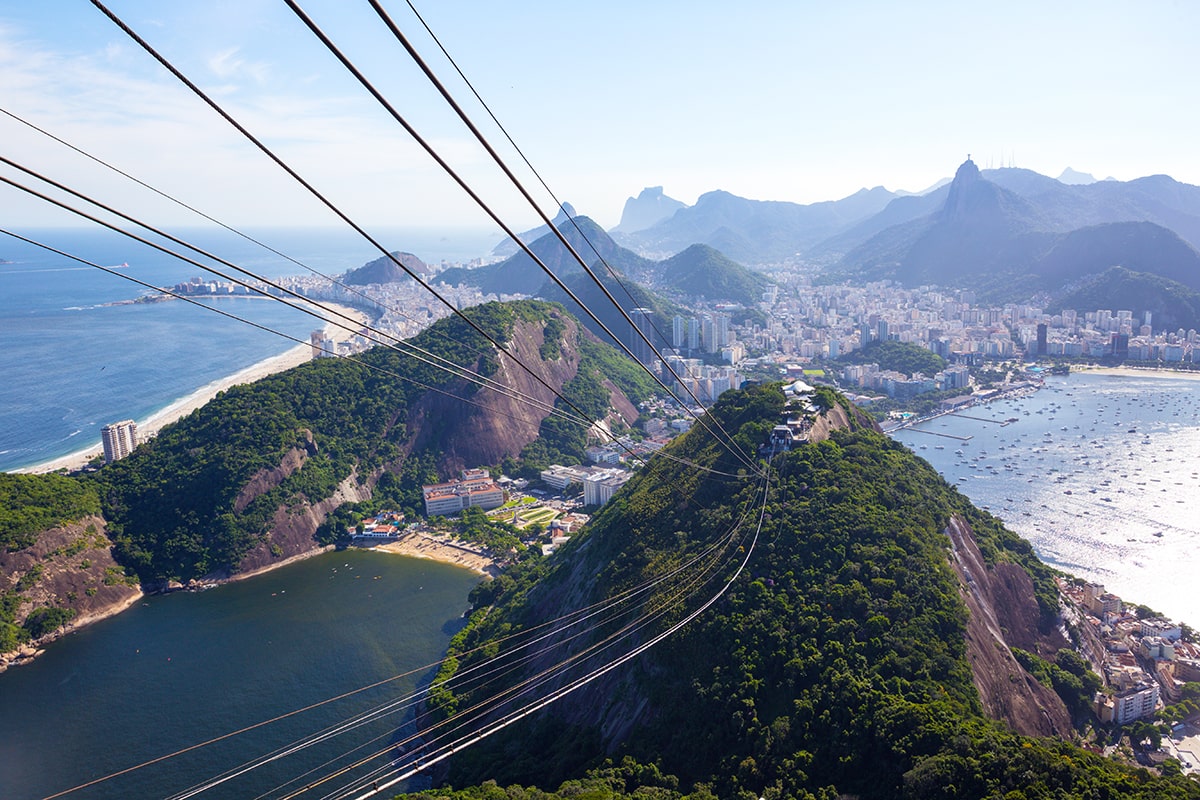
From atop Sugarloaf Mountain, you can behold a breathtaking panoramic view of Rio de Janeiro. As you ascend in the cable car, the cityscape gradually unfolds before your eyes, revealing a stunning combination of natural beauty and urban charm.
The golden beaches stretch along the coastline, inviting you to relax and soak up the sun. The iconic Christ the Redeemer statue stands tall on Corcovado Mountain, overlooking the city with open arms. The lush Tijuca Forest surrounds the city, providing a green oasis amidst the bustling streets.
From this vantage point, you can truly appreciate the unique geography of Rio de Janeiro, with its mountains, bays, and islands. As you take in the sweeping vistas, you realize why Sugarloaf Mountain is a must-visit attraction for anyone who wants to experience the true essence of Rio.
The Escadaria Selarón: A Stairway of Art
As you continue your exploration of Rio de Janeiro, delve into the vibrant art scene with a visit to the Escadaria Selarón, a mesmerizing stairway adorned with captivating artwork. This famous staircase, located in the Lapa neighborhood, is the brainchild of Chilean artist Jorge Selarón.
He spent over 20 years transforming the once dilapidated steps into a stunning work of art. The Escadaria Selarón is a colorful mosaic masterpiece, featuring over 2,000 tiles from more than 60 countries. Each tile tells a unique story and adds to the staircase’s charm.
As you ascend the steps, you’ll be immersed in a kaleidoscope of colors and patterns, making it a truly unforgettable experience. Don’t forget to take a moment to appreciate the artistic genius that transformed this ordinary staircase into a must-see attraction in Rio de Janeiro.
Facts Rio’s Favelas: A Unique Socio-cultural Phenomenon
Immerse yourself in the unique socio-cultural phenomenon of Rio’s Favelas, where vibrant communities thrive amidst challenging conditions.
These informal settlements, characterized by their tightly-packed houses and narrow alleyways, are home to a significant portion of Rio de Janeiro’s population. Despite facing issues such as poverty, limited access to basic services, and high crime rates, the favelas are known for their resilience and strong sense of community.
Life in the favelas is filled with music, art, and a vibrant street culture that’s deeply rooted in Brazilian history and traditions. Samba music and dance, for example, originated in these neighborhoods and have become integral to the cultural fabric of Rio.
Exploring the favelas offers a unique opportunity to witness the creativity, resourcefulness, and resilience of the people who call these communities home.
Historical Landmarks: The Imperial Palace and National Library
Continue your exploration of Rio de Janeiro’s historical landmarks as we delve into the Imperial Palace and National Library, two iconic sites that showcase the city’s rich history and cultural heritage.
The Imperial Palace, also known as the Paço Imperial, was once the residence of the Portuguese royal family when they fled to Rio de Janeiro in 1808. This majestic building now serves as a cultural center, hosting exhibitions, concerts, and events that highlight Brazil’s artistic and historical legacy.
Just a short distance away, you’ll find the National Library, the largest library in Latin America. With over 9 million items in its collection, including rare manuscripts and historical documents, this institution is a treasure trove for researchers and history enthusiasts alike.
Explore the impressive architecture and immerse yourself in the stories that these landmarks have to tell.
Fact: Rio de Janeiro is a State
Rio de Janeiro is one of Brazil’s 27 federative units. It boasts the second-largest economy in Brazil, with São Paulo state taking the top spot. This state, accounting for 8.2% of Brazil’s population, plays a significant role in the nation’s economy by contributing 9.2% to the Brazilian GDP.
Situated within the Southeastern region of Brazil, Rio de Janeiro shares borders with neighboring states: Minas Gerais to the north and northwest, Espírito Santo to the northeast, and São Paulo to the southwest. To the east and south, it is bounded by the South Atlantic Ocean. Rio de Janeiro covers an area of 43,653 square kilometers (16,855 square miles) and has its capital in the city of Rio de Janeiro. This city served as the capital of the Portuguese Colony of Brazil from 1763 to 1815, the United Kingdom of Portugal, Brazil, and the Algarves from 1815 to 1822, and subsequently as the capital of independent Brazil from 1822 to 1960.
The state’s 22 largest cities include Rio de Janeiro, São Gonçalo, Duque de Caxias, Nova Iguaçu, Niterói, Campos dos Goytacazes, Belford Roxo, São João de Meriti, Petrópolis, Volta Redonda, Magé, Macaé, Itaboraí, Cabo Frio, Armação dos Búzios, Angra dos Reis, Nova Friburgo, Barra Mansa, Barra do Piraí, Teresópolis, Mesquita, and Nilópolis.
Although Rio de Janeiro is the smallest state in terms of area within the Southeast region, it ranks as the third most populous state in Brazil, with a population of 16 million people as of 2011. This high population density is a notable characteristic of the state. Moreover, Rio de Janeiro boasts the third-longest coastline in Brazil, surpassed only by Bahia and Maranhão states.

